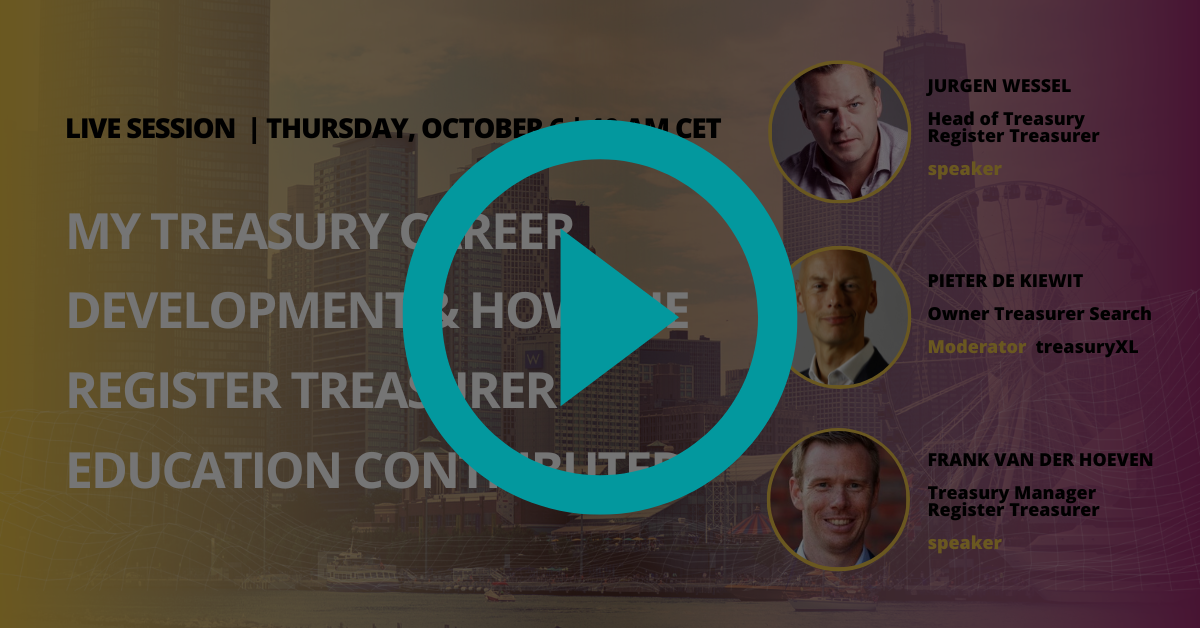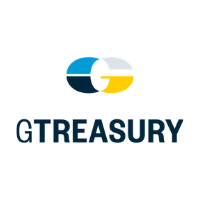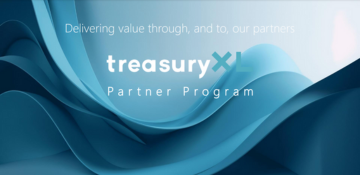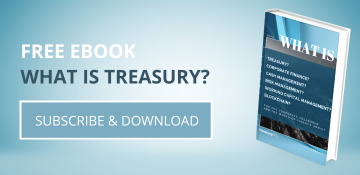Sibos 2022 | How did our expert Philip Costa Hibberd experience the event?
19-10-2022 | Philip Costa Hibberd | treasuryXL | LinkedIn |
We sent our expert Philip Costa Hibberd to the SIBOS conference to discover and explore the World’s Premier Financial Services event.
Last week, the SIBOS conference took place in Amsterdam. Sibos 2022 brought together more than 10,000 participants in Amsterdam and online, as this event returned in-person for the first time in three years.
Philip is delighted to share his experience with you. Happy reading!

What is Sibos?
The Sibos conference is an annual event organized by Swift that brings together leaders in the payments, banking, and financial technology industries. The conference provides a forum for attendees to discuss the latest trends and developments in the industry, but – as it turns out – it is mostly used as a venue where bankers meet other bankers with the occasional FinTech thrown in the mix.
During the 4 days of the 2022 edition, I learnt that little focus is given to the needs of the corporate treasurer. Throughout the conference, a few interesting recurring themes emerged nonetheless, which I’ll describe in the paragraphs that follow.
Purpose of the financial industry
Queen Maxima – acting as the “United Nations Secretary-General’s Special Advocate for Inclusive Finance for Development” – kicked off the opening plenary by speaking about the importance of financial inclusion and access to banking services for all.
The first priority is to make sure we do no harm […] but we have a chance today of moving beyond doing no harm to actually doing good. So, beyond transaction volume and customer acquisition can we create the rails for transformative change to help users become more financially healthy?
Sadly the answer I heard from the bankers speaking on stage during the sessions that followed was not promising. “Maximising shareholder value” was still the dominating mantra… which – as experience teaches us – has seldom led the banking industry to “doing no harm”, let alone “doing good” in the past.

Banks vs FinTechs
A bit more hope for the industry “doing good” came from the voice of FinTechs on stage. As it turns out, a mantra based on “innovation and disruption” makes it easier to attract scarce resources (such as talent) and ironically deliver shareholder value as a consequence.
It was interesting to observe the evolution of the Bank-FinTech relationship. The change in how banks perceive FinTechs today compared to a few years ago was remarkable. Once seen as a threat, FinTechs are today considered an ally by banks.
When asked “Are FinTechs Friend or Foe?”, bankers gave answers as:
“Partnership with FinTechs is our main strategy”.
“Partnership with FinTechs is crucial. They bring agility and they are a matter of survival for us”.
It was hardly a surprise then to learn on day 2 of the conference about BNP Paribas’ acquisition of Kantox, a leading fintech for automation of currency risk management. The relationship between banks and FinTechs will probably only get warmer and tighter from here… but only time will tell if that is good news for us.

Regulation-driven innovation
Besides FinTechs, another often cited source of innovation for banks was “the regulator”.
Singapore was the most cited example of successful regulator-driven innovation. Its central bank has been encouraging innovation in the financial sector with generous grants to adopt and develop digital solutions, AI technology, cybersecurity capabilities, etc. On top of that, it has developed an exceptionally accommodating regulatory framework. It has for example introduced a “regulatory sandbox” for FinTechs and banks to test their products and services in a live environment without them having to be concerned with compliance hurdles (at least for the delicate initial phases of innovation).
There are hopes that Singapore’s success will be taken as an example by other regulators across the globe, but the most basic expectation from the industry is for regulators to at least set guidelines to improve standardization across the market. As nicely put by Victor Penna, there is still a lot of work to be done:
“Can you imagine if I sent an email from Singapore to Belgium and they couldn’t process it? That is exactly what is happening today with payments. This has to change.”
One last often cited trend where regulators are expected to play a dominant role in innovations, are Central bank digital currencies – CBDC in short.
CBDC (Central bank digital currency)
CBDCs are digital currencies issued by central banks. Typically central banks have two kinds of liabilities:
- Cash: takes a physical form and is available to the general public
- Central bank deposits: which take a digital form but with limited access
CBDCs are a third form of liability that complements cash and central bank deposits: they take a digital form and are directly available to the general public.
More than 100 central banks are estimated to be working on their own projects. They are important in the context of innovating the financial sector because they have the potential to provide greater efficiency and transparency in financial transactions. Additionally, CBDCs could help to reduce the cost of financial services and increase access to financial services for underserved populations.
There is still little consensus today on what exactly the impact will be, not least because of the fragmentation of all the initiatives. For example, when it comes to the digital Euro project, the impact on corporate treasury payments is expected to be limited. The project is still in the validation phase, but the assumption is that even if/when the project were to move into the realization phase (decision expected in September 2023) usage will be limited by design with the introduction of low limits to the maximum balances which could be held (exact limits need to be defined, but think of a few thousand euros max).

Realtime banking and 24/7/365
Banks have invested a lot in the technological backbone needed to support open banking and instant payment requirements across the world and seem to be puzzled by the modest adoption. The ambition is to move away from batches, cut-off times, and end-of-day statements in favour of instant payments 24/7 and provide information-on-demand via APIs.
From a treasury perspective, this brings some challenges. Moving to APIs can be hard, especially if you have a fragmented ERP/TMS/Banking landscape. But the biggest challenge is probably the way that we organize our work and our processes. As jokingly put by Eddy Jacqmotte group treasurer at Borealis:
“Instant Treasury is nice: but I don’t like the idea of instant treasury on Saturday and Sunday”.
AI and (big) data
The ever-decreasing cost of storage and processing information, combined with the ever-increasing flow and value of user data has transformed the “AI” and “(big) data” brothers from geeky kids in the corner to rockstars in the centre stage.
Besides the obvious use cases such as fraud detection, sanction screening, reconciliation, payment repair, etc. the new trend is to use AI to generate new tailored content and to feed it to users to measure their interest in a specific topic and nudge their behaviour. Instead of asking you directly if you are interested in a mortgage, the algorithm might casually inform you about the price per square meter of properties in the neighbourhood where you go for coffee every weekend. If you interact with the prompt, the algorithm will take notice and will keep on feeding you with “property-related” information, until you find yourself asking for a mortgage…or showing interest in something else that the bank can do for you.
Sounds sketchy? It might be, that’s why another trend in this area has been making its way to the foreground: Explainable AI.
Explainable AI is a form of AI that can provide understandable explanations for its predictions and decisions. This is important especially in the financial industry because it can help to build trust with customers and regulators and avoid (or at least make explicit and controllable) unwelcome biases.
For example, the Apple Card / Goldman Sachs scandal in 2019 could have been prevented if the algorithm used by Apple had been more transparent and accountable. According to researchers, the algorithm used by Apple was biased against women, resulting in lower credit limits for women than men. If the algorithm had been more explainable, the bias could have been discovered and corrected before the card was launched.
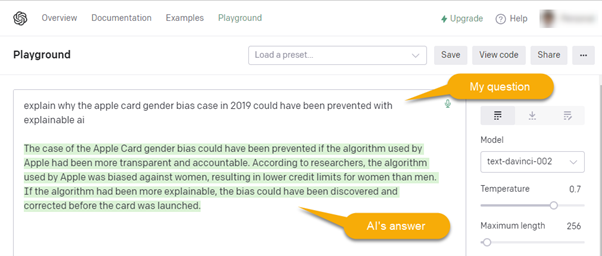
In essence: AI is powerful, but transparency is key. On that note, I have a confession to make: the previous paragraph was written by an AI and not by me…
Thanks for reading!

The state of CBDC projects: lessons learned
18-10-2022 | Carlo de Meijer | treasuryXL | LinkedIn |
The future of the financial world will be digital. But it is becoming clear that this world will not be dominated by privately-issued crypto assets like crypto currencies such as Bitcoin or even stable coins.

By Carlo de Meijer
It is becoming all the more likely that it will be central bank digital currencies (CBDCs) that are digital versions of nation’s fiat money that are issued and regulated by central banks as these are seen as more secure and inherently not volatile.
“Crypto assets and stablecoins are no match for well-designed central bank digital currencies (CBDCs). “If CBDCs are designed prudently, they can potentially offer more resilience, more safety, greater availability, and lower costs than private forms of digital money.” Kritalina Georgieva, managing director of the International Monetary Fund (IMF).
Recently, a number of interesting reports have been published giving insights on the present state of CBDC projects (IMF report) and on the various risks that these could bring (Atlantic Council GeoEconomics Center Research). There are also various private players that could play an important role in solving the various issues CBDC projects are confronted with, like Ripple and Algorand.
What can Central Banks and international organisations learn from their findings?
IMF Report: “The Ascent of CBDCs”
In September the International Monetary Fund (IMF) has released a report named “The Ascent of Central Bank Digital currencies”. The publication provides insight into the research the organization has done on CBDCs, thereby giving an update on the progress of the global development of CBDCs in various countries. In this report the IMF said that crypto’s technical capabilities could bring the potential for central banks to create a rich, diverse monetary system if well-constructed and that global collaboration might actually be a good thing.
This report shows there is a great deal of interest in the concept of CBDCs in a growing number of countries worldwide. Central banks all over the world are now exploring their potential as they could offer several benefits, but for various reasons, ranging from real-time payments to increased financial participation by the unbanked and underbanked.
Present state
The report indicates that as of July 2022 about 97 countries across several continents around the world have indicated interest and are nowadays exploring CBDCs, which is more than half of the global central banks. Most Central banks thereby already moved beyond conceptual discussions and are either in the researching, testing or deploying stage of the process.
As of the time of publishing the report, so far only two countries have fully launched their CBDCs projects, namely the Nigerian eNaira in October 2021 and the Bahamas’ Sand Dollar in October 2020. According to the data sourced by the IMF from its dedicated CBDC tracking website: another15 CBDC projects are in the pilot stage, while, 15 more are currently in the proof-of-concept stage, with 65 countries still carrying out research on theirs. Meanwhile, six countries cancelled their CBDCs.
What may it bring?
Furthermore, the IMF report highlighted the benefits and issues associated with CBDCs.
Benefits
The report states that one of the benefits of the digital asset is financial inclusion, as CBDCs are seen as an avenue for central banks across the world to bring financial services to their unbanked population. CBDCs will increase financial inclusion in nations by giving people access to banking accounts’ security and convenience.
But there are more benefits to be get. If CBDCs are designed prudently and possess all the qualities of the underlying technology of crypto assets, they can potentially offer more resilience for domestic payment systems, more safety, greater availability, and lower costs than private forms of digital money. This may lead to better access to money, increase efficiency in payments, and in turn lower transaction costs. CBDCs can also improve transparency, while providing more scalability and stability backed by central banks to the people using it.
Risks
The IMF pointed out some of the issues CBDCs might face including apathy, which may affect adoption. While a CBDC may have many potential benefits on paper, central banks will first need to determine if there is a compelling case to adopt them, including if there will be sufficient demand .
Additionally, issuing CBDCs comes with risks that central banks need to consider. Users might withdraw too much money from banks all at once to purchase CBDCs, which could trigger a crisis. Central banks will also need to weigh their capacity to manage risks posed by cyberattacks, while also ensuring data privacy and financial integrity.
Banking industry associations also announced their fear that a central bank digital currency – if not well constructed – could implode their core business model of loaning out depositors’ funds by enticing consumers to take deposits out of traditional accounts and keep them in digital currencies, which would cut deeply into the funds banks have available to lend
What should Central banks do?
When it comes to preserving users’ privacy and avoiding financial censorship, the creation of CBDCs has a number of challenges that must be overcome before they can be implemented.
The IMF pointed out that central banks need to assess risks before issuing CBDC, and at the same time strengthen the ability of cyber-attack risks, so as to protect the property security and privacy security of people in their own countries.
These challenges include training users on how to use it, authenticating identity, accessing it offline, and taking measures to preserve user privacy and security.
GeoEconomics Center Research
Another research on CBDCs relates to that of the Atlantic Council GeoEconomics Center that operates at the nexus of economics, finance, and foreign policy, and seeks to shape a better global economic future.
Their recent report titled “Missing Key – The Challenge of Cybersecurity and CBDCs” shows that 105 countries and currency unions are currently exploring the possibility of launching a CBDC, either retail, issued to the general public, or wholesale, used primarily for interbank transactions. That is up from an estimated 35 in 2020. Of this total 19 Group of Twenty (G20) countries are considering issuing CBDCs, and the majority of them have already progressed beyond the research stage.
CBDCs may pose various risks
This research shows that CBDCs may pose various risks, but “responsible design could turn them into opportunities”. There is growing concern about cybersecurity and privacy risk, as more countries launch CBDC pilot projects.
There are many design variants for CBDCs, ranging from centralised databases to distributed ledgers to token-based systems. Each design needs to be considered before reaching conclusions about cybersecurity and privacy risks. Central banks should therefor understand the specific cybersecurity and privacy risks associated with CBDCs.
If implemented without proper security protocols CBDC vulnerabilities could be exploited to compromise a nation’s financial system. Present technology however enables central banks to ensure that both cybersecurity and privacy protection could be embedded in any CBDC design.
What can be done to mitigate these risks?
Centralised data collection
Many of the proposed design variants for CBDCs (particularly retail CBDCs) involve the centralized collection of transaction data. This is posing major privacy and security risks. From a privacy standpoint, such data could be used to surveil citizens’ payment activity. Accumulating so much sensitive data in one place also increases security risk by making the payoff for would-be intruders much greater.
The risks associated with centralized data collection can be mitigated either by not collecting it at all or by choosing a validation architecture in which each component sees only the amount of information needed for functionality.
The latter approach can be aided by cryptographic tools, such as zero-knowledge proofs, which authenticate private information without revealing it and allowing it to be compromised, or cryptographic hashing techniques.
These cryptographic techniques can be extended even further to build systems that verify transaction validity with only encrypted access to transaction details like sender, receiver, or amount. These tools have been tested extensively in privacy-preserving cryptocurrencies and are based on significant advances in the cryptography community. The technology already enables central banks to ensure that both cybersecurity and privacy protection are embedded in any CBDC design.
Transparency vs privacy
A common concern with privacy-preserving is reduced transparency for regulators. Regulators generally require enough insight to identify suspicious transactions, enabling them to detect money laundering, terrorism financing, and other illicit activities. International standard-setting and more knowledge sharing between banks is therefore critical of rapid development and adoption.
Cryptographic techniques can be used to design CBDCs that provide cash-like privacy up to a specific threshold (for example EUR 10,000 as was proposed in the EU) while allowing government authorities to exercise sufficient regulatory oversight. A new CBDC system would not need to reinvent security protocols but could instead improve on them.
Retail CBDCs
Several countries have committed to or even deployed retail CBDCs whose underlying infrastructure is based on distributed ledger technology. Such designs require the involvement of third parties as validators of transactions. The associated risks can potentially be mitigated through regulatory mechanisms such as auditing requirements and stringent breach disclosure requirements. This is why the need for international standard-setting and more knowledge sharing between banks is critical at this moment of rapid development and adoption.
Cross border regulation, interoperability and standard setting
Countries are understandably focused on domestic use, with too little thought for cross-border regulation, interoperability, and standard-setting. Fragmented international efforts to build CBDCs are likely to result in interoperability challenges and cross-border cybersecurity risks.
International financial forums, including the Bank for International Settlements, IMF, and G20 have a critical role to play towards the development of global CBDC regulations in standard-setting bodies.
IMF global platform for cross border payments
The International Monetary Fund (IMF) is pushing for a global platform for cross-border payments, that would accept CBDC payments, hold them in escrow and issue tokens to reduce the cost of international transfers.
The platform will provide a common settlement feature and a common programming language to write smart contracts on the platform that are compatible with one another. It will be available for both the public and private sector to use, that will help simplify international transactions. For example, a firm could further program a smart contract to “automatically hedge foreign exchange risks of transactions or pledge a future incoming payment in a financial contract.”
The overall purpose of the settlement platform is to simplify things for the private sector, help coordinate transactions between individuals, businesses and countries, and providing settlement services on a global scale to ensure payments are made in a timely manner. This could lead to the platform becoming a “tight public-private partnership.”
The platform will also introduce the tokenization of money. This would make money “accessible to anyone with the right private key and transferable to anyone with access to the same network.” “Tokenized money introduces a radical transformation that breaks down the need for two-way trusted relationships. Anyone can hold a token, even without having a direct relationship with the issuer”.
The next step in the process will be “the publication of two papers that will lay out an initial blueprint for such platforms to support CBDC clearing and settlement transactions between multiple countries in the hope of stimulating further discussion on these important topics, which are likely to shape the future of cross-border payments.” Adrian, director and division chief of IMF’s Monetary and Capital Markets Department
Ripple’s involvement in CBDC projects
But also private players like Blockchain-based cross border payments firm Ripple could play an important role in solving the various issues many CBDC projects are confronted with. Ripple already plays actually quite an important role and is participating actively in many CBDC development programs. Ripple is thereby working on CBDC solutions with several pilot programs already in progress. And there are several indications that show the company is indulged in several running projects also, not disclosed yet.
Ripple Labs partnered in 2021 with the Royal Monetary Authority of Bhutan. This partnership was focused on the issuance and further managing of the digital form of native currency ngultrum. A couple of months later, the company also partnered with the Republic of Palau for developing a digital currency.
Additionally, in February, Ripple was also said to join the Digital Euro Association, a Europe-based think tank, as a supporting partner. The initiative was focused on driving the growth and development of Digital Euro and CBDCs in the region. Ripple recently (on September 1) joined a new Digital Dollar Project (DDP) sandbox for testing CBDC technology, called Technical Sandbox Program.
Ripple’s solution is thereby based on the use of private versions of its XRP Ledger (XRPL) in CBDC programs launched in March 2021, which is technically not a blockchain but rather uses the digital ledger technology (DLT) that is the foundation of blockchains. The program had the objective to explore more potential technical and business effects of CBDC within the country.
XRPL’s Federated Sidechains
An interesting development during 2022 is the implementation by a number a number of leading blockchains, including Ripple and Ethereum, of so-called purpose-made sidechain solutions.
Governments will definitely need centrally controlled networks for their CBDC developments. However, such platforms can’t be built from scratch: they would lack a userbase and liquidity inflow.
Federated Sidechains by XRP Ledger can solve these problems as they can implement every logic, idea and governance architecture required for its issuers. At the same time, Federated Sidechains are flexible and adjustable when it comes to use cases, adoption and interoperability with mainstream blockchains.
The Ripple blockchain ((XRPL) can supercharge state-backed digital assets with its Federated Sidechains, and may play a decisive role in the development of Central Bank Digital Currencies. Ripple’s XBridge enables the transfer of assets across different ledgers. A federated sidechain can be centralized or decentralized, open or private, its validators can follow any consensus mechanism. Any feature can be implemented to enforce law and regulation.
Algorand Hybrid CBDC model
Another interesting player in the CBDC development area is Algorand. This blockchain company and central bank digital currency platform recently published their 2022 report “Issuing Central Bank Digital Currency on Algorand”, discussing the latest trends in CBDC development, capturing insights into how CBDCs are unfolding at central banks around the world, and share their latest findings on CBDCs.
Hybrid CBDC model
The report also described Algorand’s hybrid model for using CBDCs and its advantages compared to other token-issuing L1 protocols. This hybrid CBDC model is built on a private instance of the open public Algorand blockchain.
This model, that has been tested in various CBDC projects, is a two-tier system that is seen as a unique approach from enterprise and other providers. It creates an environment that enables uncomplicated and smooth interaction between various ecosystem partners.
In this model, central banks have full control over the CBDC, while simultaneously enabling licensed service providers (LSPs) such as commercial banks, payment providers, and other fintech companies like e-money firms, to simultaneously facilitate distribution and transactions
The “openness-by-design” architecture of Algorand enables building protocols and processes robustly and stably that are interoperable with legacy systems and future requirements. Algorand’s consensus algorithm guarantees that transactions are quick and instantly final and that the blockchain never soft forks. This makes Algorand a perfect blockchain for CBDCs.
EU Digital euro project as an example
An example of how a CBDC project is advancing is the digital euro project. In July 2021 the ECB launched the investigation phase of the digital euro project. This phase aims to identify the optimal design of a digital euro and ensure it meets the needs of its users. During this phase the central bank is also set to analyse how financial intermediaries could provide front-end services that are built on a digital euro), how the currency would be distributed to users and how payments would be settled. .
The European Central Bank has picked five partners to help it develop a digital euro prototype, including Spanish Caixabank and US tech giant Amazon, alongside Worldline, Nexi and EPI. Caixabank will focus on producing a prototype for P2P online payments using the digital euro. Nexi has been appointed to provide front-end prototypes at physical shops to test different payment use cases. Worldline has been selected for the specific use case ‘peer-to-peer offline payments’ of a digital euro, which focuses on the payment between individuals, via a digital wallet..
This phase will see its end in October 2023, when the Governing Council will decide whether to move to the next phase, in which the ECB hopes to see the development of integrated services as well as carry out testing and possible live experimentation of a digital euro. This so-called “realisation phase” is aimed to develop and test the appropriate technical solution and business arrangements necessary to provide a digital euro. This phase could last around three years.
A decision on the possible issuance of a digital euro may only come later, also depending on legislative developments regarding a regulation and given essential aspects of the digital euro. This will be discussed by the European Parliament and the Council of the EU, upon agreement by the European Commission.
Policymakers will soon start working on a rule book for the digital euro scheme, needed to develop digital euro solutions and be ready if and when a digital euro is introduced.
Final remarks
The future of money is undoubtedly digital. Goal is to achieve much cheaper, instantaneous domestic and cross-border payments via the new technologies. A main role will thereby be played by CBDCs that are now under construction worldwide. It is however too early to tell how this landscape will evolve.
The question is, what will be the final outcome? The answer to that could come from the IMF report that shared some of the lessons learned from various central banks from their digital currency efforts.
Firstly, there is no universal case for CBDCs because each economy is different. So central banks should tailor plans to their specific circumstances and needs.
Secondly, financial stability and privacy considerations are paramount to the design of CBDCs. Central banks should therefor understand the specific cybersecurity and privacy risks associated with CBDCs.
In many countries, privacy concerns are a potential deal-breaker when it comes to CBDC legislation and adoption. So it’s vital that policymakers get the mix right.
Thirdly, there should be a balance between developments on the design front and on the policy front.
Fourthly, central banks worldwide should cooperate on areas like regulation, interoperability and standard setting. International standard-setting and more knowledge sharing between banks is critical of rapid development and adoption.
And added to that “Public-private cooperation on the digital euro is crucial”.”
Fabio Panetta, Executive Board member ECB
Carlo de Meijer
Economist and researcher
BNP Paribas signs an agreement for the acquisition of Kantox
17-10-2022 | treasuryXL | Kantox | LinkedIn |
treasuryXL congratulates highly valued partner Kantox with the announcement that BNP Paribas has signed an agreement to acquire the leading fintech for automation of currency risk management!

Kantox, a leading fintech for automation of currency risk management, will accelerate its growth with the support of BNP Paribas and the strengths of its integrated business model. This acquisition builds on the initial strategic partnership between BNP Paribas and Kantox initiated in September 2019.
BNP Paribas is pleased to announce the signature of an agreement for the acquisition of Kantox, a leading fintech for the automation of currency risk management. Kantox’s software solution has managed to successfully re-bundle the Corporate FX workflow, offering a one-stop-shop, API-driven, plug-and-play solution which has emerged as a unique technology within the B2B cross-border payments sector. Kantox’s technology provides an unrivalled level of automation and sophistication to Corporates in setting up hedging strategies.
By leveraging its integrated business model, BNP Paribas is well-positioned to accelerate and extend Kantox’s offering to a wide range of Corporate clients across the globe.
The acquisition of Kantox is supported by the Global Markets business of BNP Paribas’ CIB division and the business centres of the Commercial, Personal and Banking Services (CPBS) division. The two divisions aim to deploy Kantox technology to large corporates as well as SMEs and Mid-Cap clients, capitalising on market knowledge and the local presence of the group.
This acquisition illustrates BNP Paribas’ Growth Technology Sustainability 2025 plan that sets out to accelerate the development of technological innovations, enhance customer experience and provide best-in-class capabilities to its clients.
Philippe Gelis, CEO and co-founder at Kantox: “We have been serving clients together since 2019 when our technology partnership started. During those 3 years, we spent a lot of time together in the field, getting the opportunity to understand that together we were stronger and able to bring more value to clients. It is the best of both worlds, the leading software company in the currency management automation category and the leading bank in Europe.”
Olivier Osty, Head of Global Markets, BNP Paribas CIB: “We are delighted to strengthen our partnership with Kantox, which brings to our clients a unique and innovative platform to automate their currency risk management. Corporate treasurers are currently navigating turbulent markets, and advanced technology can help mitigate some of the challenges, easing the burden of manual tasks and allowing them to focus on their core business.”
Yann Gérardin, Chief Operating Officer, Head of BNP Paribas CIB: “The acquisition of Kantox presents a further illustration of our ability to establish long-term partnerships with fintechs in an ever-increasing range of areas. Supporting our clients in their international development and providing them with the most advanced technological solutions have always been our priority and are, as such key pillars of our GTS 2025 strategic plan.”
Thierry Laborde, Chief Operating Officer, Head of BNP Paribas CPBS: “This acquisition demonstrates how our distinctive model and integrated platform strategy are able to create value and develop business opportunities. Our leading positions with European companies of all sizes will enable Kantox to further accelerate its development while improving our customers’ experience.”
The acquisition is subject to regulatory approvals and is expected to complete in the coming months.
RECORDING | Live Session: My Treasury Career Development
17-10-2022 | treasuryXL | Treasurer Search | LinkedIn |
The recording of the Live Session: My Treasury Career Development & How the Register Treasurer education contributed, is Now Available for You.
Duration: 53 minutes
Make sure to use this Passcode: %Gp@NT=5
If you are thinking about how you can shape your treasury career and need some inspiration, this recording is a must watch. There are plenty of education opportunities, but in what education will you invest and why?
In this webinar two graduated Register Treasurers will share their stories:
Jurgen Wessel RT is interim Head of Treasury of SHV and has experience in a variety of international companies at HQ and treasury hub level.
Frank van der Hoeven RT van der Hoeven used to be a banker, moved to the corporate side and currently is Treasury Manager at IMCD, well-known for many successful acquisition and integration processes.
They will tell you about how they moved between various stations and will pay special attention to the added value of their post academic degree: The Treasury Management and Corporate Finance programme (RT Programme) at the Vrije Universiteit Amsterdam (VU Amsterdam).
Make sure to use this Passcode: %Gp@NT=5
Enjoy!
Best regards,

Kendra Keydeniers
Director, Community & Partners
Everything you need on the Standardised Approach
13-10-2022 | treasuryXL | Refinitiv | LinkedIn |
How can data and analytics help banks meet the FRTB Standardised Approach deadline? This blog by Refinitiv helps you understand everything you need on the Standardisded Approach.
Eurofinance remains THE event for corporate treasurers | By Pieter de Kiewit
12-10-2022 treasuryXL | Pieter de Kiewit | Treasurer Search LinkedIn
Throughout covid times the organizers of Eurofinance remained active and were able to create interesting web-based events. Still, general opinion in last weeks’ event in Vienna was that there is nothing like the live thing. The programme was packed with interesting content, the event floor with interesting companies and visitors.
By Pieter de Kiewit

Communication leading up to the event and the venue, the Wien Messe, radiated experience in events of this size. The numbers of representatives and visitors were impressive. Luckily, the venue is big enough to not nerve the visitors who have to get used to large crowds again.
The programme was spread out over the very large room for plenary meetings, five large rooms for parallel session with presentations & panel discussions and “open rooms” on the trade floor. Key note speakers like Guy Verhofstadt and Goran Carstedt were able to enthuse with stories beyond the scope of treasury, others covered topics about treasury technology, both practical & visionary and treasury organization, for example about my personal favourite, the treasury labour market.
For many, the trade floor was easily as interesting as the content. Visitors gained market information, for example preparing for a TMS selection and implementation. Also reuniting with old treasury friends and getting to know new ones, was relatively easy during well catered breaks. Some of the visitors created new legends during the Thursday night afterparty that is not covered by this looking-back-blog.
As treasuryXL ambassador I visited the various partners of the platform present and received positive feedback on the event. So Cobase, Kyriba, TIS, CashForce, Nomentia, Refinitiv and CashAnalytics, we hope to see you again in Barcelona again and welcome a number of new ones.
Hasta luego,

Thanks for reading!
Amid Ongoing Economic and Geopolitical Uncertainty, Treasurers Must Turn to Data and Technology
12-10-2022 | treasuryXL | GTreasury | LinkedIn |
Helen Kane, the Risk and Exposure Fellow at Hedge Trackers (a GTreasury company) recently sat down with The Global Treasurer to discuss how treasury teams can approach yet more global uncertainty.

Kane, along with the global head of corporate cash management at Deutsche Bank, lends expertise to the current state of deglobalization, the supply chain, and more—as they relate to treasury operations.
“Treasury strategies and skill sets that drove success in the 1990s were different from those in the 2020s. My advice for all treasurers is to be open to change, be open to learning, and be ready to flex, all while maintaining those historical controls and implementing new ones to safeguard your assets,” says Kane.
Interview Haia Aaraj, Recruitment Consultant at Treasurer Search
11-10-2022 | treasuryXL | LinkedIn |
Speaking about a rockstar within recruitment for treasury you think about Haia. She started working for Treasurer Search as a Recruitment Consultant at the beginning of this year and celebrated many successes with the team since then.
Haia is a down-to-earth, spontaneous and proactive human being with a hilarious sense of humor! You will be very lucky to work with her as someone who is searching for a next treasury adventure or if your company is in need of a treasurer.

We wanted to know Haia a bit more and we asked her the following questions. Happy reading!
7 questions for Haia, let’s go!
INTERVIEW
1. Treasurer Search is a recruitment business for treasury based in the Netherlands. What is your role within the company? And can you tell us more about your background?
I’m a recruitment consultant at Treasurer Search, so I’m mainly responsible for assignments from our clients to hire treasury professionals (from A to Z), and here we’re talking about Juniors up to executive level assignments. About my background, I have a Bachelor in Sociology and a high Technical Diploma in Management. I started in recruitment since 2016 doing some internships, and officially started as a recruitment assistant at a medical centre, then a company in Dubai where I made my way to the upper level and I left as a Recruitment manager. I moved to the NL and started at Treasurer Search in Feb, 2022.
2. How would you describe Treasurer Search in 3 words?
Well-connected / Transparent / Professional
3. What is, in your perception, the biggest benefit for clients and candidates to work with Treasurer Search?
They will be working with Recruiters who are experienced in both recruitment and treasury, so we know who a good cash manager or group treasurer is. At the same time, Treasurer Search provides a transparent recruitment process, no surprises or hidden info, alongside the smoothness in communication.
4. You started at Treasurer Search with zero knowledge about Treasury 8 months ago. Now you are a Rockstar in matching the right candidate with a client. What’s your secret?
In today’s world, everyone can learn whatever they want in no time, the resources available are at a wide range. For me it was mainly reading, attending online courses, and of course, learning from the experts in this field.
5. How do you stay informed about the recruiting industry combined with treasury trends?
Attending as much helpful webinars as possible. Also following the stars in both industries is very helpful because you need to stay up-to-date, don’t you?
6. What do you think is the most rewarding aspect of being a treasury recruiter?
Being a treasury recruiter widen your aspects of how the financial management works. You forget about traditional roles in business finance and you learn treasury is way more than the basics that the public knows.
7. What are you most proud of in your career at Treasurer Search so far?
When I started at Treasurer Search I was new to the country, and the treasury. This is where my colleagues played the big part and helped a lot through time. Now I’ve integrated well in the society as well as learned a lot about treasury. Mainly, I’m proud of my colleagues who played an essential part in this big movement for me.
Want to connect with Haia? Click here
Thanks for reading!

Kendra Keydeniers
Director Community & Partners, treasuryXL
The Impact of the Supply Chain Crisis on Working Capital
10-10-2022 | treasuryXL | ComplexCountries | LinkedIn |
Working capital is always a hot topic – but never more so than now. Depending on how you count, most businesses are facing double, triple or more whammies.

The Impact of the Supply Chain Crisis on Working Capital
- Difficulty obtaining supplies, resulting in lost sales, or seasonal goods arriving too late for the season (one participant is in the apparel industry, where this is crucial).
- Manufacturing inventories building up, as products cannot be completed or sold due to one or two missing components – but the rest have been bought and paid for.
- Supply chain management building extra inventory buffers
- Difficulty managing FX hedging programmes, as future cash flows become even harder to predict and forecast
- And, of course, this is all happening against an environment of rising interest rates, which increases the cost of holding inventory
- Margin pressures, due to increased shipping costs – especially given the increased use of emergency shipments, which come outside the agreed rates
- Coupled with inflation and recession risks, there is an increasing concern over distributors’ being left with unsold inventory, with an accompanying credit risk
As always, we had a lively discussion – I encourage you to read the different stories our participants had to tell. They contain lessons for all of us. The main takeaways:
- There is increased use of supply chain financing programmes, both supplier financing and factoring. Suppliers are becoming less reluctant to use them, and several participants have extended these programmes to countries and areas where they were not used before.
- An increasing trend to use fintech platforms for this, rather than single bank programmes – often for capacity reasons, as well as ease of use.
- In many cases, treasury is working with procurement and the suppliers to find a collaborative solution. This can involve paying suppliers early, to help them.
- One participant spoke of a failed implementation of supply chain financing – the lesson being that you need to have the right team.
- In each case, treasury is working with the business to try to find the right trade off between the cost of holding more inventory, and the cost of missed or late sales.
- One participant uses internal factoring to make the best use of cash within the company, before they go to the outside market for funding. This is a cash optimisation tool we often forget.
- One participant’s company manages very large, multi-year fixed price contracts, with many suppliers around the world. This is a particularly challenging environment.
- Again, while treasury tends to view inventory and working capital as an evil, it can also be a competitive advantage, if you can supply when your competitors cannot.
Managing and funding working capital is one of the biggest challenges we face. In an environment such as today’s, it is an area where treasurers can truly add value to the business.



